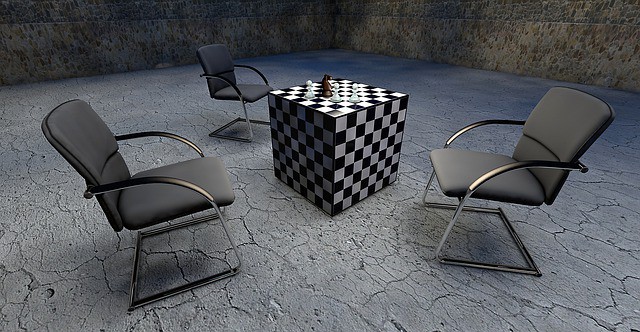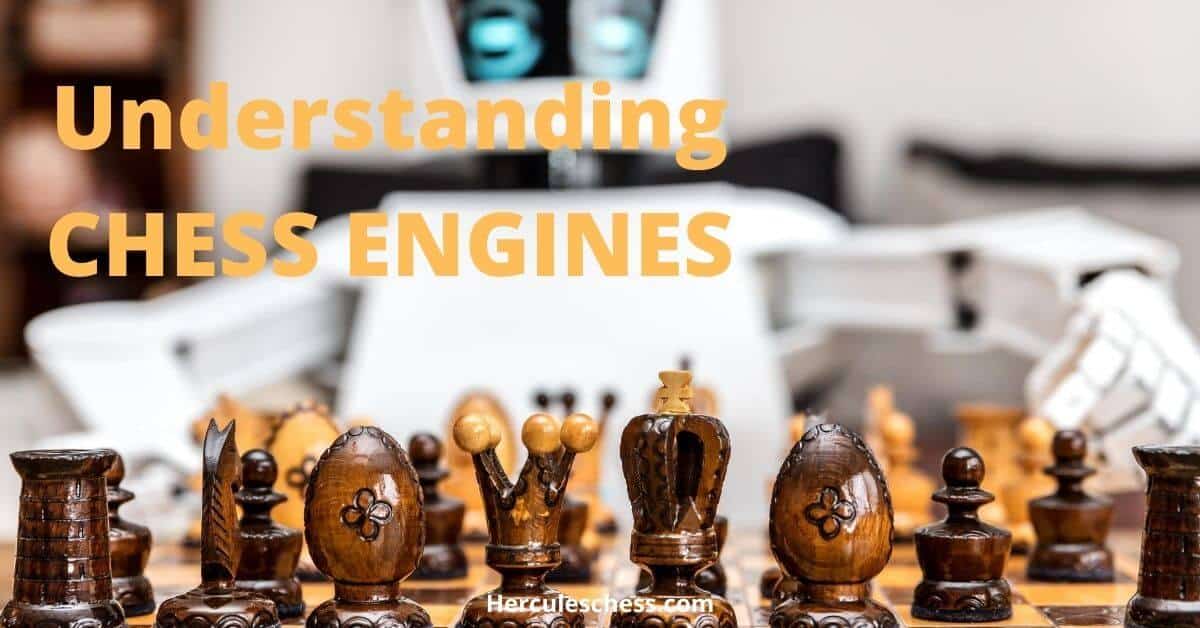Chess strategy is a key factor that makes the game royal and beautiful. Once you make the right opening moves, you and your opponent can begin unfolding new approaches. Soon, the “real chess game” begins and both of you will inevitably be hooked.
Everyone loves to study the theory behind opening moves and learn new strategies and techniques that will pave the way to victory. However, the middle game is where players either win or give up.
End-game strategies are quite straightforward; you either win or lose. Many chess players give up before they reach the end. Reading on, you will surely learn successful new tactics and strategies.
This is an important area of chess. Without having an idea of basic strategies, you won’t be able to win. At this point, there is so much information that comes your way, and playing the game can leave you overwhelmed. On the other hand, chess strategy is easy to understand if you know the three basic ideas:
- Material
- King Safety
- Freedom of Pieces
Everything in chess can be explained in terms of these three things. Learn them well and they will help you make the right choices in your games.
1. Material
In chess, ‘material’ means the pieces. To see which player has more material, we “count” the pieces. Not all pieces are equal. Each one is given a value that tells how good it is at moving around the board. The better it moves, the higher the number.
The queen is the most powerful piece, so she counts the most. The pawns are the slowest. They count the least. The values are based on hundreds of years of experience by chess masters. They agree these numbers are a good measure of the strength of the pieces.
| Queen |  | 9 Points |
| Rook |  | 5 Points |
| Bishop |  | 3 Points |
| Knight |  | 3 Points |
| Pawn |  | 1 Point |
The king is not included because he cannot be taken like the other pieces. When the king is lost, the game is over. A simple way to count the material is to look at the captured pieces and see which ones are extra. It’s not necessary to add up every piece on the board.
Related Post: Numerical values of the chess pieces
For example, in this position, these are the captured pieces for White:
- 2 Knights
- Bishop
- 4 Pawns
Captured pieces for Black:
- Rook
- Knight
- Bishop
- 3 pawns
If we ignore those that are the same for both players, the difference is that Black has a rook for White’s knight and pawn. White is ahead in material because a rook is worth more than a knight and a pawn. (5>3 + 1)
Counting pieces is an important part of seeing who has the better position. It is always good to have more material than the other player. A bigger force is usually superior to a smaller one.
One of the main goals of strategy is to win material. Since we want to stop our opponent from doing the same thing, the goal is also not to lose material. The numbers we use to count material are only a guide to show how the pieces compare with each other. You can not win a game just by collecting “points”.
But the values are helpful for deciding whether a trade is good or not. Normally, it’s not smart to trade a Rook for a pawn. That’s like exchanging five dollars for one dollar. You won’t get rich that way! There are exceptions though. The diagram above is a good example. White has an excellent reason to give up a rook for a pawn: checkmate!
1.Rxg6+ fxg6
After 1…Kh7 2.Rg7+ Kh8, White can mate several ways but the quickest is 3.Qf4
2.Qg7#
If we count the pieces in this position, we see that White is up a knight and bishop. A material advantage this big is more than enough to win the game. Unless White makes a major blooper! The standard way of winning when you have more material is to trade down to an endgame. The extra pieces are used in the ending to help promote a pawn. And then the new queen takes care of the checkmate.
White can follow this strategy with:
1.Rd8
Forcing the exchange of all the rooks.
1…h6 2.Rxb8 Rxb8 3.Rd8+Rxd8 4.Bxd8
With only a king and pawns, black has no hope against the bishop and knight. The next stage of white’s plan is to win the pawns on b7 and a6. The knight can handle that with 5.Na4 and 6.Nc5. After the black pawns are captured, the white a-pawn is free to march forward.
Another method of winning when you are ahead in material is to play for a direct attack. The extra pieces are used to overpower the defenses around the opponent’s king. This plan is especially good if you have lots of extra material.
The diagram below is identical to the last one, except there is a white queen on g5 instead of a bishop. The same plan as before with 1.Rd8 works here too, but White can win more quickly by going straight for the mate.
1.Rd7! Rf7
There is no defense. After 1…g6, the attack crashes through with 2.Qe7!
2.Rxf7 Kxf7
And White mates in 3.
2. King Safety
Material is not the only thing that matters. The position of the pieces is important too. Especially the position of the kings. Nobody cares about the piece count when there’s a checkmate. The safety of the king is one of the basic ideas of chess strategy. We can tell how safe a king is in two ways:
- By how open he is
- The number of attackers and defenders
Kings feel safer hiding behind their pawns. Without pawn cover, a king may be at risk because of the open lines. Kings also like to be surrounded by loyal guards. The biggest danger for the king is when the attackers around him outnumber the nearby defenders. In this position, it’s White to play
Black is behind in material by a bishop and a knight. But White is still the one in trouble. The white king has lost most of his pawn shield, his queen has wandered off, and the black pieces, led by the queen on g3, are all well-placed for the week. The main threat is 1…Bc5 followed by 2…Qf2#. It’s not easy to stop.
1.b4
White has two ways to defend the f2 square, but both lead to fancy mates.
1.Bd2 Bc5 2.Be1 Rd1 3.Bxd1 Rxe1# or 3.Qxc7 Qf2 #.
1.Qb7 Bc5 2.Qf3 Rd1+ 3.Bxd1 Re1#
1…Qe1+
Black can also force mate like above with 1…Bc5! 2.bxc5 Rd1+ 3.Bxd1 Re1# The queen sacrifice is even cooler!
2.Kxe1 Bg3+ 3.Kf1 Rd1+ 4.Bxd1 Re1#
In the final position, White is up by 20 points and down by one king.
The kings are the targets on a chessboard. Their positions direct the course of the game. We must always keep one eye focused on each king. All chess strategy is related to the safety of the two kings. The main strategic goals in chess are to protect your own king and to attack the opponent’s king.
We protect a king by giving him pawn shelter and keeping a few bodyguards close by. We attack a king by getting him in the open and aiming our pieces at him. We also attack by making holes in his walls of pawns and destroying his defenders.
Let’s look at the kings in the following diagram (white to move)
On the surface, both kings look safe behind their pawns. But it takes more than castling to safeguard a king. The black king is in danger here for two reasons: His defending pieces are no match for the four white attackers (Qd2, Re1, Bd3, Bf4), and the advance of the black h- pawn makes it easier for White to open lines.
Sometimes it’s a good idea to make an escape square for your king by moving the h-pawn. Nobody wants to be mated on the back rank. But in this case, it’s the weak spot that tumbles the wall.
1.Bxh6!
The bishop doesn’t bother to knock on the castle door. He just starts blasting!
1…gxh6
It was smarter to leave the pawn on g7 and bring the queen back instead to help defend. Even then, 1…Qd8 2.Re3! is not much fun for Black. Moves like 1…Be6? lead to a classic mate by 2.Qg5! g6 3.Qf6 Qxc3 4.Qg7#
2.Qxh6
In exchange for the bishop, White has a lot more than two pawns. The black king is having an open house and the white queen is his first visitor.
2…f5 Black prevents Qh7# but the last brick in the wall of pawns is now gone. 2…Rd8, clearing a path for the king through f8, allows mate in four. 3.Bh7+ Kh8 4.Bg6+! Kg8 5.Qh7+ Kf8 6.Qxf7#.
3.Qg6+ Kh8 4.Re3! 1-0
The only way to stop mate by Rh3+ is 4…f4 and that allows 5.Qh7#.
3. Freedom
Besides material and safety, the other important thing in chess is how well the pieces are placed. The key to understanding the position of the pieces is the idea of freedom. Everyone likes freedom and so do the chess pieces. For them, it means being able to move. The more they can move, the happier and stronger they are.
We can judge the freedom of a chess piece in two ways:
- By how many squares it can move and
- By the defensive jobs it has
Counting the possible moves a piece can make tells us how mobile it is. The chances for a good move are greater if it has more squares to choose from. Making our pieces mobile is always a good thing. But freedom is more than just mobility. A piece may have lots of squares to go to and still not be free because it is tied down on defense.
The defensive job of a piece can be to protect another piece or to keep the opponent off a certain square. Usually, some of the pieces have to stand on guard duty. Although this work is necessary, it makes them passive. To become active, they have to get rid of these tasks. For a piece to be really free, it must be both mobile and active. It must have lots of possible moves and no defensive duties. The strategic goal is to give your own pieces freedom and to limit the freedom of the opposing pieces.
Being free is not simply freedom from something. It is the also freedom to do things. The chess pieces want to be free so they can attack the opponent. Since the pieces work as a team, we should be concerned about the general freedom of all the pieces together, and not only the individuals.
Activating one piece by restricting another one is not exactly progress. It also must be said that pawns are slow as snails, but they want their freedom just like any other piece. A mobile pawn is always preferable to a blocked pawn.
Material is equal in this position and both kings are safe. The black king isn’t castled, but without the queens on the board, he is not at risk. The difference between the two sides is mobility. Let’s compare the pieces. The black knight has zero mobility. He is totally blocked in by his own pieces. The white knight is much happier than him.
He’s perfectly placed in the center of the board, and he has several good squares to move to.
It’s the same thing with the bishops. The black one has almost no freedom. His own pawns are in the way and his only move is a retreat to c8. The white Bishop has two fine diagonals. Like the knights, bishops love to be centralized.
The black rooks are another sad story. Neither one has any room to show its true strength. Meanwhile, the two white rooks are standing proud on their open files. The difference in mobility adds up to a winning position for White. With so little freedom, black doesn’t have a chance against the active white pieces. White has several ways to win in this position. One plan that works well is to double rooks on the d-file.
Playing Rd2 and Red1 will put more pressure on the bishop at d7 and tie the knight on b8 to its defense. The black position is so bad, it’s hard to find a reasonable move after 1.Rd2!
A simple plan is by winning a pawn by:
1.Bxb8 Rxb8 2.Nd6+ Ke7 3.Nxf7+ Kxf7
After 3…Rgf8 4.Ne5, the strong knight on e5 leaves black in a real jam. Now white grabs a second pawn and heads on to an easy endgame.
4.Rxd7+ Kf6 5.Rd6 Rge8 6.Rxc6 1-0
Here’s another example, black to play where the piece count is even and the kings are safe. White should be careful of a back row checkmate though.
Let’s compare the freedom of the pieces:
The white pieces have quite a bit of mobility but they are not active. They have lots of duties to keep them busy. The bishop is responsible for guarding the pawn f2. The rook is stuck on the first rank defending the back row mate. And the knight is pinned (shielding the rook from the black bishop). Pins are a great way to take away freedom.
The black pieces are free as birds. Not only are they mobile, but they also have no chores to tie them down either. White’s lack of freedom allows Black to win a pawn with…
1…Nd2!
The knight can’t be captured. 2,Nxd2 Bxd1 is bad and 2.Rxd2 Ra1+ is worse. And there is no way to defend f3.
2.Rc1 Bxf3 3.gxf3 Nxf3+ The game isn’t over yet, but Black is still flying high (4.Kg2 Nd2 5.Rc7 Kg6)
That’s it for the three keys to chess strategy. I hope they open some doors for you in your chess games 🙂
Related Post: How to play attacking chess






